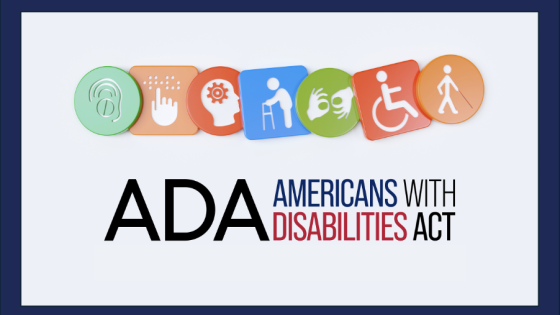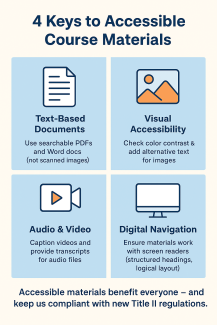With recent updates to Title II of the Americans with Disabilities Act (ADA), colleges and universities are now required to ensure that all digital course content is accessible to students with disabilities. For faculty, this means taking a proactive approach: adopting course materials that are usable by every student from the start, rather than retrofitting accessibility after the fact.
What does this look like in practice?
- Text-Based Documents: Choose searchable PDFs, Word docs, or HTML files rather than scanned image-only PDFs.
- Visual Content: Use high-contrast colors and readable fonts, and add alternative text to images.
- Audio & Video: Provide captions for videos and transcripts for audio files.
- Navigation & Structure: Use headings, lists, and logical layouts that work with screen readers.
These practices are more than legal compliance—they create an equitable learning environment. Accessible materials help students with accommodations, but they also benefit anyone reviewing content on a phone, in a noisy space, or with different learning preferences.
The DRC is here to support you in identifying and adopting accessible course materials. Together, we can ensure compliance with Title II regulations while building courses where every student has a fair opportunity to succeed.
Accessibility benefits all. Adopting accessible materials is an investment in teaching that reaches every learner.

